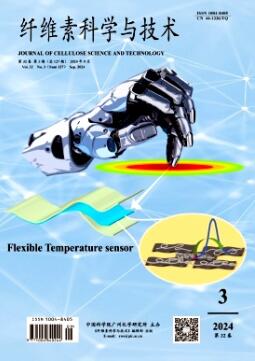Bio-based Aerogels: A New Generation of Thermal Superinsulating Materials
引用次数: 7
Abstract
Aerogels are highly porous, ultra-light (density around 0.1 g/cm3) nanostructured materials. One of their most extraordinary properties is thermal super-insulation, i.e. thermal conductivity below that of the air: 0.015 vs 0.025 W/(m.K) in room conditions. However, classical silica aerogels are extremely fragile and organic/synthetic (resorcinol-formaldehyde) aerogels may include toxic components, which hinders their wide application. Bio-aerogels are a new generation of aerogels made from biomass-based polymers, mainly polysaccharides. We prepared aerogels from cellulose (“aerocellulose” /1, 2/) and pectin (“aeropectin” /3/) via polymer dissolution, coagulation and drying with super-critical CO2. Their density varies from 0.05 to 0.2 g/cm3 and specific surface area is around 200-300 m2/g. Bio-aerogels are mechanically strong, with Young’s moduli from 1-2 to 20-30 MPa and plastic deformation up to 60-70% strain before the pore walls collapse. Aeropectin thermal conductivity turned to be around 0.015 – 0.020 W/(m.K) making it the first reported thermal super-insulating fully biomass-based aerogel. The thermal conductivity of aerocellulose is rather “high”, around 0.030-0.035 W/(m.K), due to the presence of large macropores. We demonstrate that by using polysaccharide functionalization and making polymer-silica aerogel hybrids it is possible to vary specific surface area (increase to 800-900 m2/g) and decrease aerogel thermal conductivity below that of the air.生物基气凝胶:新一代热超绝缘材料
气凝胶是一种多孔、超轻(密度约为0.1 g/cm3)的纳米结构材料。它们最非凡的特性之一是超隔热,即导热系数低于空气:在室内条件下为0.015 vs 0.025 W/(m.K)。然而,传统的二氧化硅气凝胶非常脆弱,有机/合成(间苯二酚-甲醛)气凝胶可能含有有毒成分,这阻碍了它们的广泛应用。生物气凝胶是由生物基聚合物(主要是多糖)制成的新一代气凝胶。以纤维素(aerocellulose / 1,2 /)和果胶(aeropectin /3/)为原料,经聚合物溶解、混凝和超临界CO2干燥制备气凝胶。它们的密度从0.05到0.2 g/cm3不等,比表面积约为200-300 m2/g。生物气凝胶具有很强的机械强度,其杨氏模量为1-2 ~ 20-30 MPa,在孔壁崩溃前的塑性变形可达60-70%。气胶的导热系数约为0.015 - 0.020 W/(m.K),是第一个报道的热超绝缘全生物质气凝胶。由于存在大的大孔隙,航空纤维素的导热系数相当“高”,约为0.030-0.035 W/(m.K)。我们证明,通过使用多糖功能化和制造聚合物-二氧化硅气凝胶杂化,可以改变比表面积(增加到800-900 m2/g)并将气凝胶的导热系数降低到低于空气的导热系数。
本文章由计算机程序翻译,如有差异,请以英文原文为准。
求助全文
约1分钟内获得全文
求助全文
来源期刊

纤维素科学与技术
纤维素及相关领域
自引率
0.00%
发文量
1309
期刊介绍:
Journal of Cellulose Science and Technology is an official academic journal approved by the former General Administration of Press and Publication of the People's Republic of China (GAPP) and is openly circulated both at home and abroad.
Journal of Cellulose Science and Technology is listed in Chemical Abstracts (CA), China Academic Journal Comprehensive Evaluation Database, JST (Japan Science and Technology Agency) Database (Japan) (2018), China Science Citation Database (CSCDB), China Science Citation Database (CSCD), and Japan Science and Technology Organization (JSTO) Database (Japan) (2018). ) (2018)”, ‘China Science Citation Database’, ‘China Core Periodicals (Selection) Database’, ‘China Periodicals Full Text Database’, ”China Academic Journal Network ”, “China Academic Journals (CD-ROM Edition)”, “Wanfang Digital Journal Group” and “Chinese Science and Technology Journal Database”, “The Fifth Guangdong Outstanding Journals (2018) “ etc.
 求助内容:
求助内容: 应助结果提醒方式:
应助结果提醒方式:


